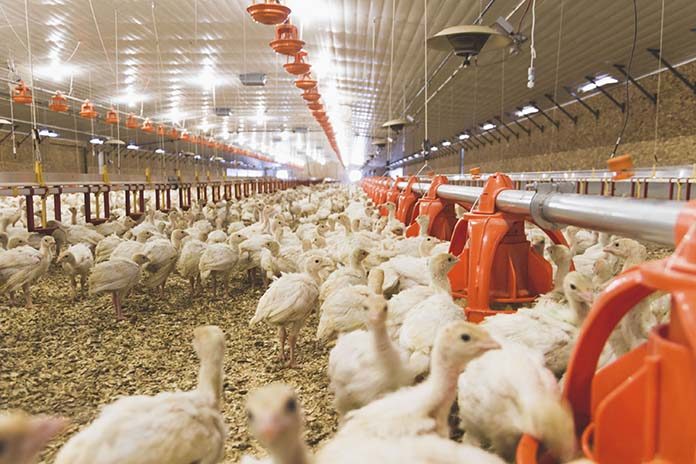
Quality of turkey meat is important but consumers are also concerned for the well-being of animals raised for meat production. However, some in the livestock industries are concerned that significant changes in production systems to improve animal welfare will deleteriously impact animal performance and meat quality.
Poultry stocking density is at the center of this conundrum as increasing space per bird may reduce facility revenue; yet increased space may improve the birds’ performance and consequently the turkey meat quality. Therefore, we investigated how 4 different stocking densities (4.56 (T1), 4.18 (T2), 3.8 (T3), 3.42 (T4) ft2/bird) affected turkey performance and meat quality.
Male poults (960) were obtained from a Butterball hatchery (Goldsboro, NC) the day of hatch. Poults were randomly assigned to pens representing 1 of 4 treatments with 4 replicate pens/treatment and 60 poults/pen. From 0-5 weeks of age, all birds were reared at the same density. Density treatments began at 5 weeks of age that were obtained by changing pen size thereby holding the pen population constant.
All pens were provided with the same typical commercial feed rations and had the same feeder and water space per bird. Birds and feeders were weighed at 0, 5 and 20 weeks of age to determine body weight (BW), BW gain, feed intake (FI), and feed conversion ratio (FCR). In addition, 12 birds per treatment (3/pen) were harvested to determine hot carcass weight, carcass cut up yield (breast major, breast minor, legs, thighs, wings, breast skin, and carcass frame), 24 h pH, 72 h drip loss, and cook loss.
All data were analyzed utilizing the general linear model procedures in JMP ® (SAS, Cary, NC). A linear regression of stocking density on BW and FCR was used to determine the effect of density on performance. During the trial, there was no difference in FI. However, based on these equations (FCR: 2.226-0.0298*FT, BW: 17.215+0.568*FT) as stocking density was decreased (i.e. ft2/bird increased), BW (P< 0.05) and FCR (P=0.08) improved.
Interestingly, increased stocking density did not adversely affect carcass yield, carcass cut up yield, 24h pH, drip loss or cook loss (P>0.05). In conclusion, as density is decreased for turkeys, performance is improved. However, there were no deleterious effects of stocking density on turkey meat quality.

















